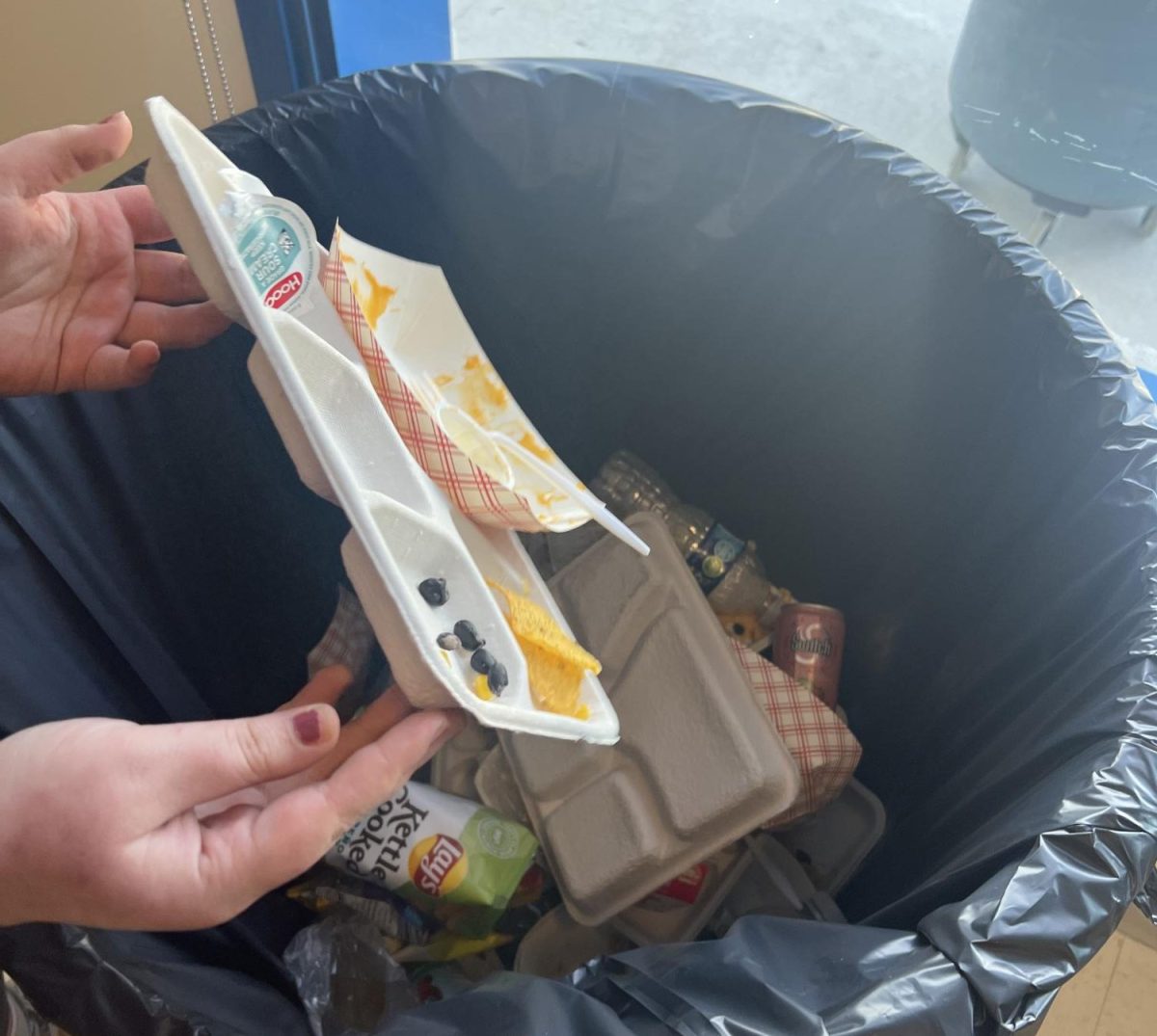WOODBURY — In the bustling halls of Nonnewaug High School, amidst the chatter and laughter of students, there lies a silent but significant issue – excessive food waste during meal times. From untouched meals to discarded leftovers, the cafeteria is unwillingly contributing to environmental degradation. It’s time for a change, and it starts with addressing our habits around food consumption.
“Unfortunately with today’s society food waste is an unseen issue,” said Clayton Hilpertshauser, a custodian at Nonnewaug. “The menu really controls how much food we throw out every day.”
Food waste is a global crisis, and every action, no matter how small, can make a difference. Nonnewaug has the opportunity to lead by example and significantly reduce its food waste footprint. One of the most effective ways to achieve this is by rethinking the portion sizes and meal options offered in the cafeteria.
Nonnewaug holds 648 students and employs 132 faculty and staff members, most of whom partake in the school’s breakfast and lunch offerings. With the variety of meal options offered, students and faculty unknowingly produce more waste than necessary, not only adding to the school’s overall food waste, but also disregarding the potential benefits of utilizing the excess food in various ways.
“The majority of leftover food gets repurposed into another meal,” says Costa Lefkimiatis, a member of Nonnewaug’s food service operation. “An example of this is when the hot lunch line has nachos, the leftovers are turned into those hearty delicious burritos served on the grill station the next day.”
Even with efforts to recycle food, a considerable amount is still discarded and ends up in the trash due to students and staff not consuming it.
“Sadly, the vegetables that we are required by law to serve on the hot lunch line end up in the garbage can,” said Lefkimiatis. “We don’t really know why; the vegetables are seasoned well and taste delicious.”
Given Nonnewaug’s commitment to the agriculture program, the school can take advantage of the opportunity to explore a few ways this food may be used to benefit the ag program, considering the many animals that reside here on campus.
“A compost bin would even make a large difference,” Hilpertshauser says. “This is a vo-ag school; we have the facilities to do it.”
Another initiative may be donating the food to local charitable organizations or food banks that prioritize the needs of food for people unable to access it. This could be impactful to many people, although setting up a group to do this would also require dedicated students.
“Starting donations to organizations or shelters would open up many opportunities for students to get involved,” says Nonnewaug sophomore Arin Morales, “but more importantly benefiting people in need.”
Addressing food waste in Nonnewaug’s lunchroom stands as both a necessity and a duty. By enacting measures like portion control and donation initiatives, there’s a real chance to cut down on unnecessary waste. With these steps, the school can serve as an example of practical solutions in the ongoing battle against food waste and its broader impacts. It’s a call to action that goes beyond the school campus itself, resonating in the wider fight against food waste and environmental harm.
This is the opinion of Chief Advocate reporter James Assard, a junior at Nonnewaug.

















